Is Touring Fun in the Taycan Turbo GT? Reflections After 540km of Driving
公開日:2025.10.10
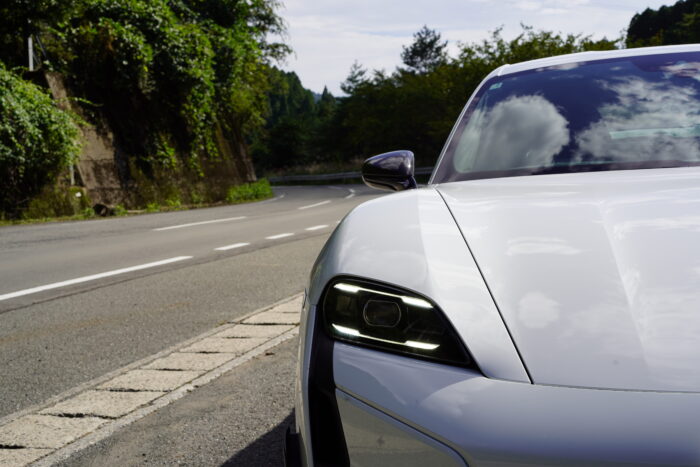
コンテンツ
Next-Generation Suspension Performance Shines on the Highway
It’s been eight months since I purchased the Taycan Turbo GT with the Weissach Package, and I’ve already logged over 5,000 km. Among the six or seven cars I own, it’s rare for me to rack up this kind of mileage. That alone speaks volumes about how much I want to drive this car every day.
This time, I decided to embark on a serious touring trip to attend the EV event “Fureai EV” held in Okayama. Since my wife planned to join later in her Taycan Cross Turismo 4S, I chose to head to Okayama alone the day before. This decision ultimately gave me a renewed appreciation for the true capabilities of the Turbo GT.
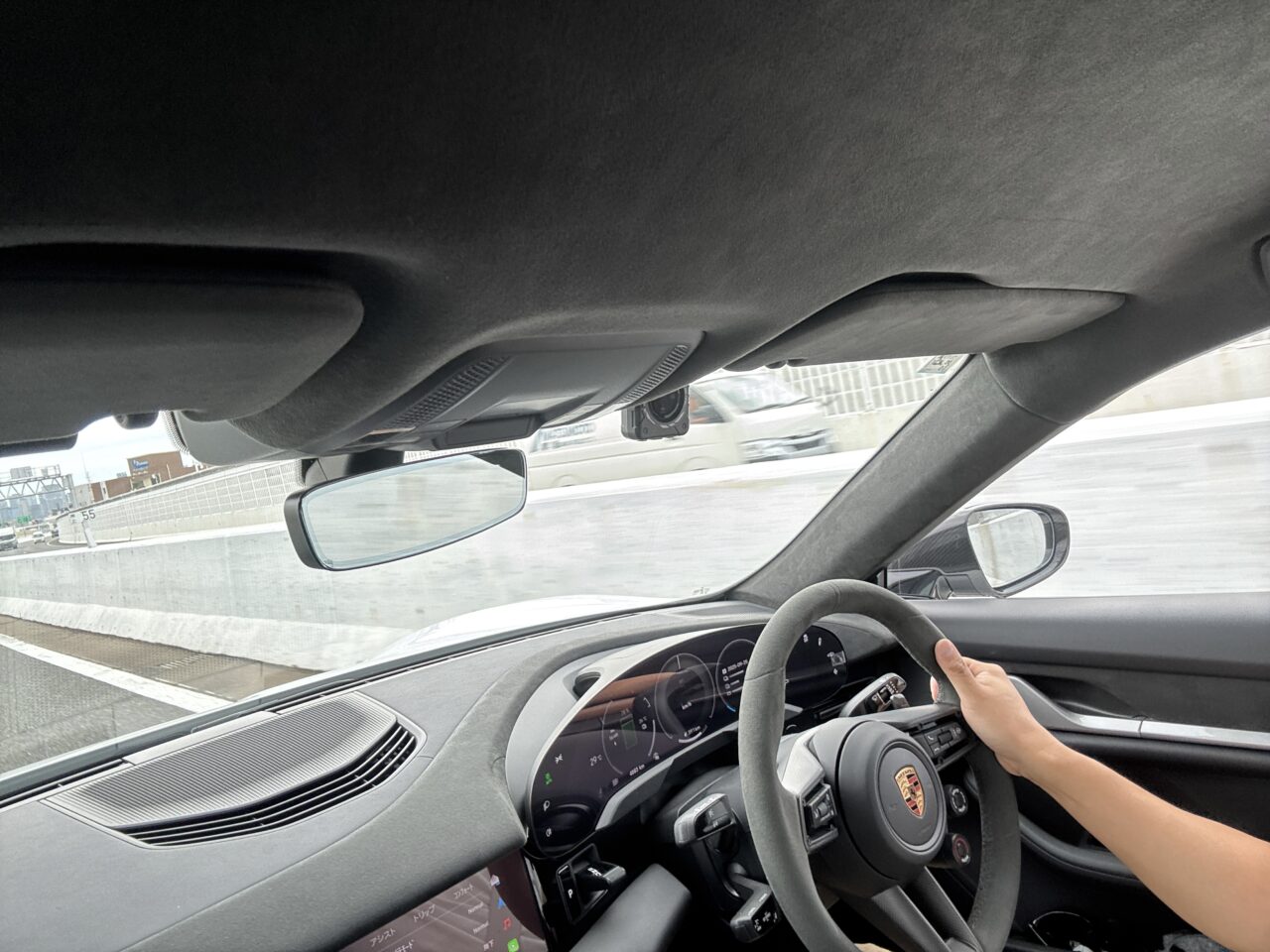
Driving west on the Chugoku Expressway, I was reminded once again of this car’s unique character.
When you hear “bucket seats for long-distance driving,” many imagine discomfort and fatigue. I thought so too. But once on the road, those expectations are completely overturned. Because your body is firmly secured, you don’t waste energy using unnecessary muscles. There’s no shaking, so no fatigue. It’s simple, but this logic can only be truly understood through experience.
Above all, Porsche Active Ride’s performance is overwhelming.
It’s on a whole different level from traditional PASM or PDCC. While absorbing road inputs, the body posture remains perfectly stable. Your line of sight doesn’t wobble at all. I call this ride quality “Kintoun”—like Goku’s flying cloud from Dragon Ball, it feels as if you’re gliding through the air. Whether accelerating or braking hard, the body stays flat. Despite its racing-car looks, I can confidently say it’s more comfortable than any luxury sedan. In terms of highway comfort and high-speed stability, I know of nothing that surpasses this car.
Shattering Preconceptions on Mountain Winding Roads
After exiting the highway at Yamazaki Interchange in Shiso City, Hyogo Prefecture, I switched from Prefectural Route 53 to Route 72, heading toward Chikusa Kogen Ski Resort—a place filled with childhood memories. But nostalgia wasn’t the only reason for choosing this route. It’s an ideal driving road with gentle ups and downs and just the right amount of corners.
Once on Route 72, the Turbo GT’s true value begins to reveal itself. This is where the real fun starts. It might sound unbelievable, but this over 2-ton car feels lighter than my Boxster. I say this as someone who owns both simultaneously. Its agility in low-speed corners even surpasses the Boxster.
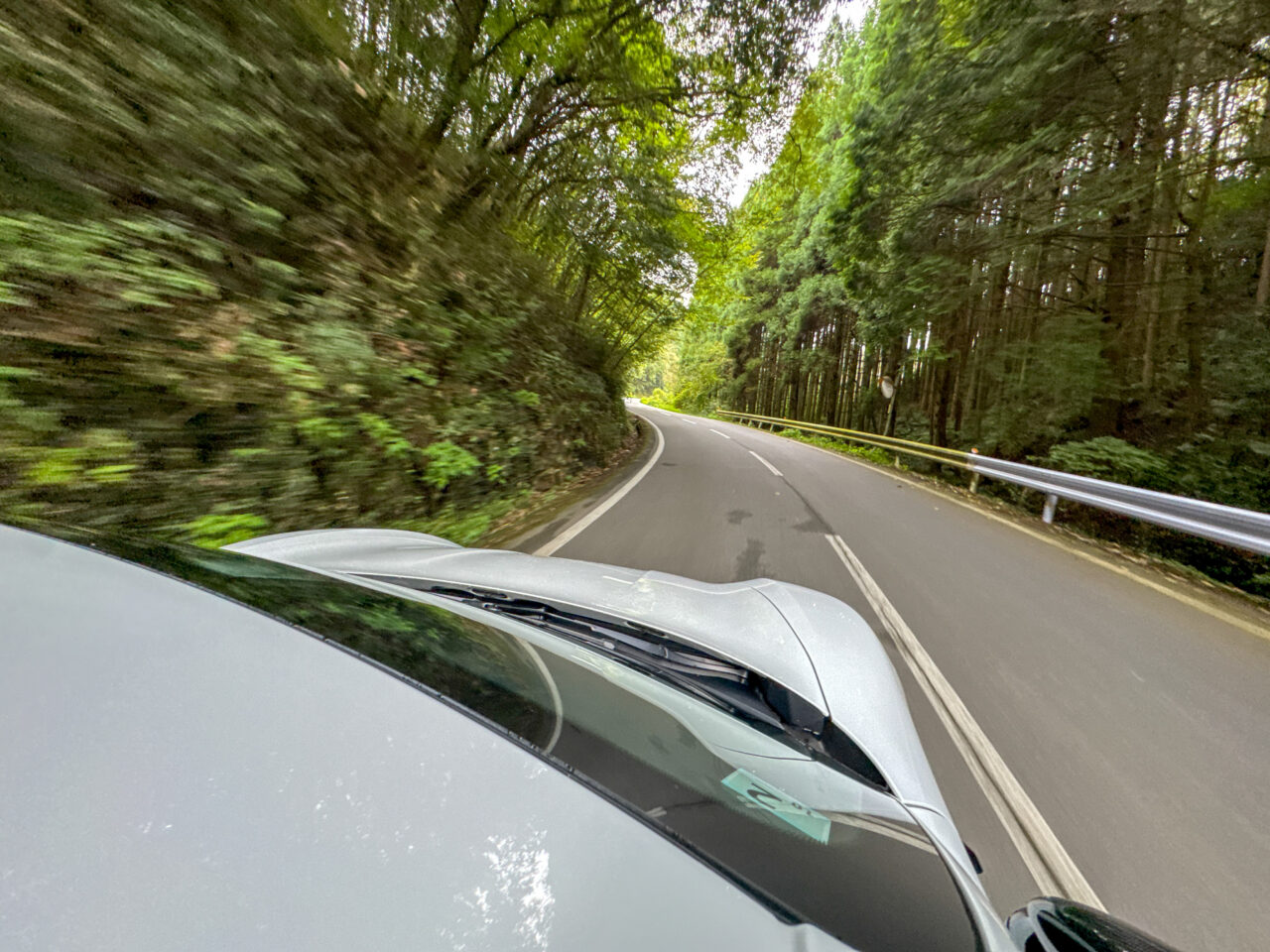
The moment you exit one corner, you’re already at the next. This sensation hit me repeatedly. The instant you turn the steering wheel, the car’s direction changes—no lag at all. It’s hard to believe such responsiveness comes from a heavy car. Active Ride completely suppresses body roll, and the instant torque from the motors presses the tires firmly onto the road. This combination creates a driving experience impossible to replicate with an engine car.
Next, I entered Route 482. This road is fantastic too. It shifts from gentle rural scenery to mountain winding roads. With little traffic, you can drive at your own pace. Connecting Hyogo and Okayama, this route is, once again, the perfect touring choice.
Approaching a series of tight corners, the Turbo GT moves like a fish in water. Right, left, then right again. Each change in direction reveals the car’s extraordinary agility. It reminded me of the chicane at Suzuka Circuit—smooth as flowing water. Engine cars have a slight delay before accelerating out of corners, but the Turbo GT has none. The moment you exit a corner, the next acceleration is already underway. This seamlessness is the essence of an EV sports car.
A New Driving Experience Born from EV-Exclusive Acceleration
After an overnight stay in Maniwa City, I chose a route the next morning via Route 313, Prefectural Routes 30 and 375, then onto Route 429. Route 429 was especially enjoyable—a perfect “Japanese country road.” Low traffic, beautiful scenery, and an endless stretch of road make it ideal for relaxed touring.
Then came the legendary Oku-Kibi Kaido.
Here, the Turbo GT’s true prowess shines. The car’s response to accelerator input is incredibly quick. “Quick” doesn’t do it justice—it’s instantaneous. Without gear shifts, full power is available from any speed. Whether from 20 km/h or 40 km/h, maximum torque kicks in the moment you press the pedal.
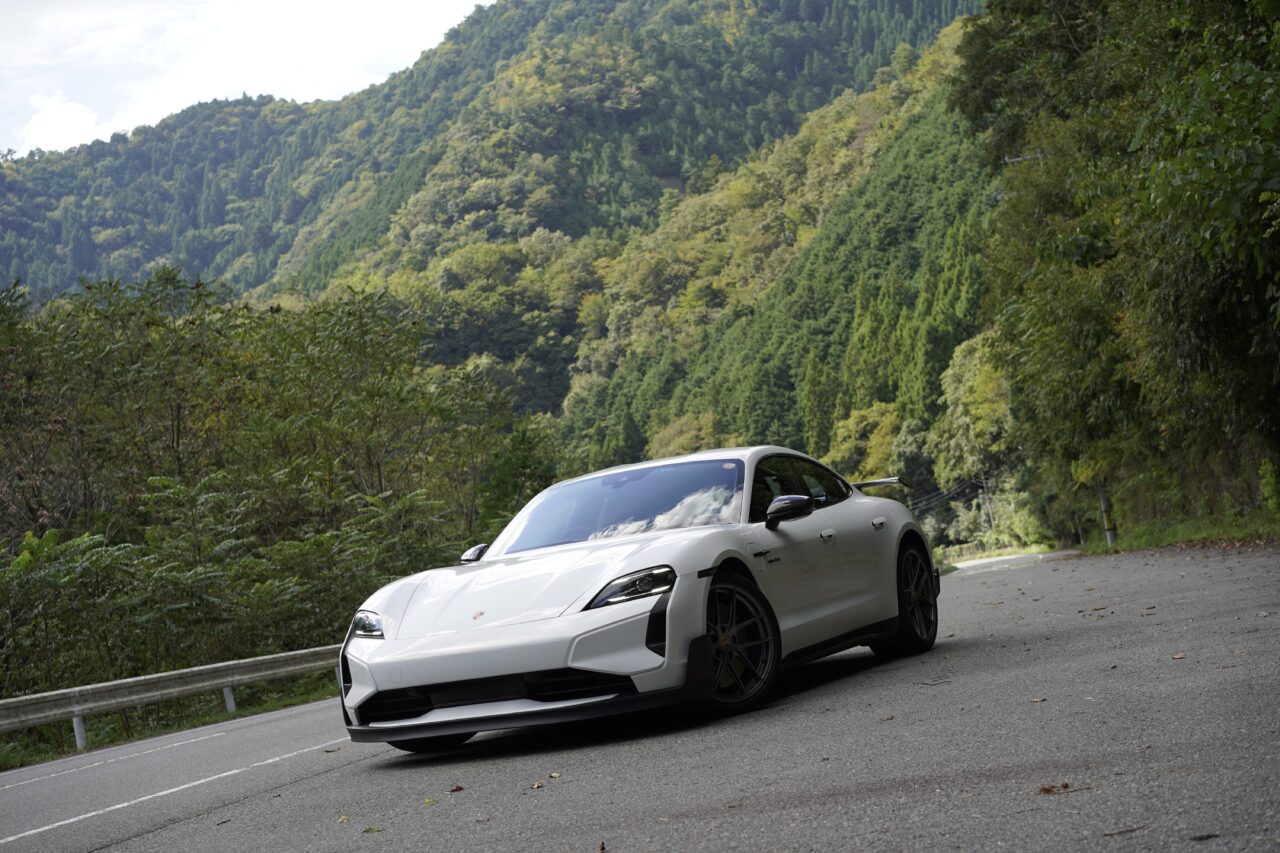
Traction control works with extreme precision, keeping the tires firmly planted. There’s almost no traction loss like you’d find in high-power engine cars. The harder you press the accelerator, the more the car moves forward. This sensation is addictive. Thanks to Active Ride, the body remains perfectly flat. Even while experiencing intense acceleration and lateral G-forces, your body doesn’t sway and your view stays steady. This is modern Porsche. Or perhaps, the future of sports cars.
Driving through Oku-Kibi Kaido, I reached a firm conclusion.
To be honest, once you experience this driving sensation, the current 911 feels lacking. As a Porsche fan, it’s hard to admit, but it’s true. The difference is on another level. It’s not about gas versus EV—it’s about pure driving pleasure. The Turbo GT completely surpasses the modern 911 in terms of dynamic performance and responsiveness to driver input. I have to acknowledge that.
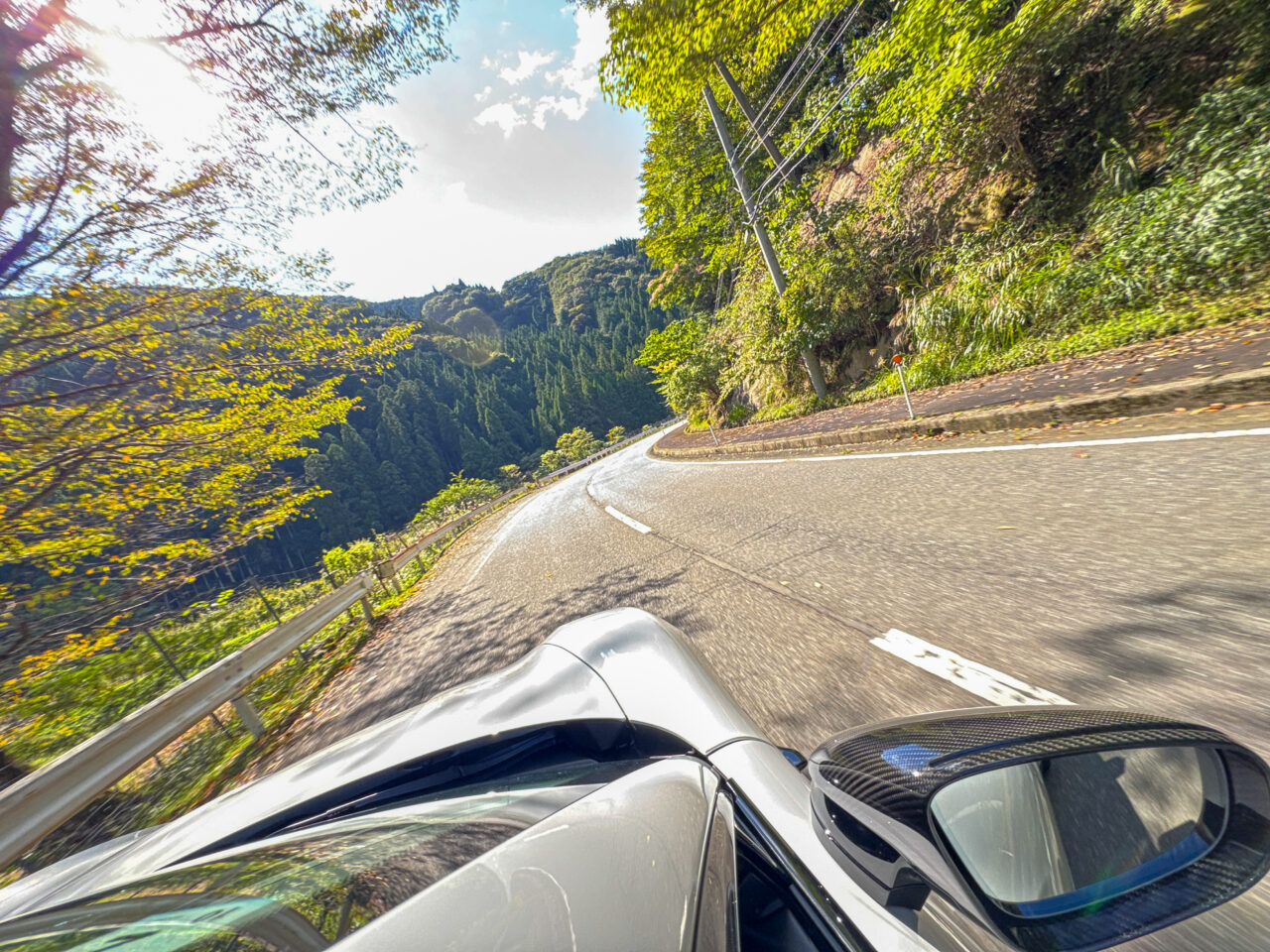
Practicality and Differences from the Standard Taycan Revealed After 540km
The total distance covered on this tour was about 540 km, with only two charging stops. A quick top-up during a 5-minute restroom break at the Chikusa roadside station, and a 30-minute rapid charge at a Nissan dealer in Maniwa City. That was all it took to have plenty of battery left to comfortably return home. The practicality for touring is more than sufficient. Concerns about charging infrastructure are now largely unfounded.
After the event at Convex Okayama, I swapped cars with my wife and headed home in her Taycan Cross Turismo 4S. The comparison was fascinating. Though both are Taycans, they feel like completely different cars. The moment I switched, I was surprised by the difference. The Cross Turismo is mild and comfortable. In normal mode, it rides like a luxury sedan. Yet its performance is outstanding. Step on the accelerator and it rockets forward like a warp jump, with unmatched high-speed stability. It’s a fantastic car in its own right.
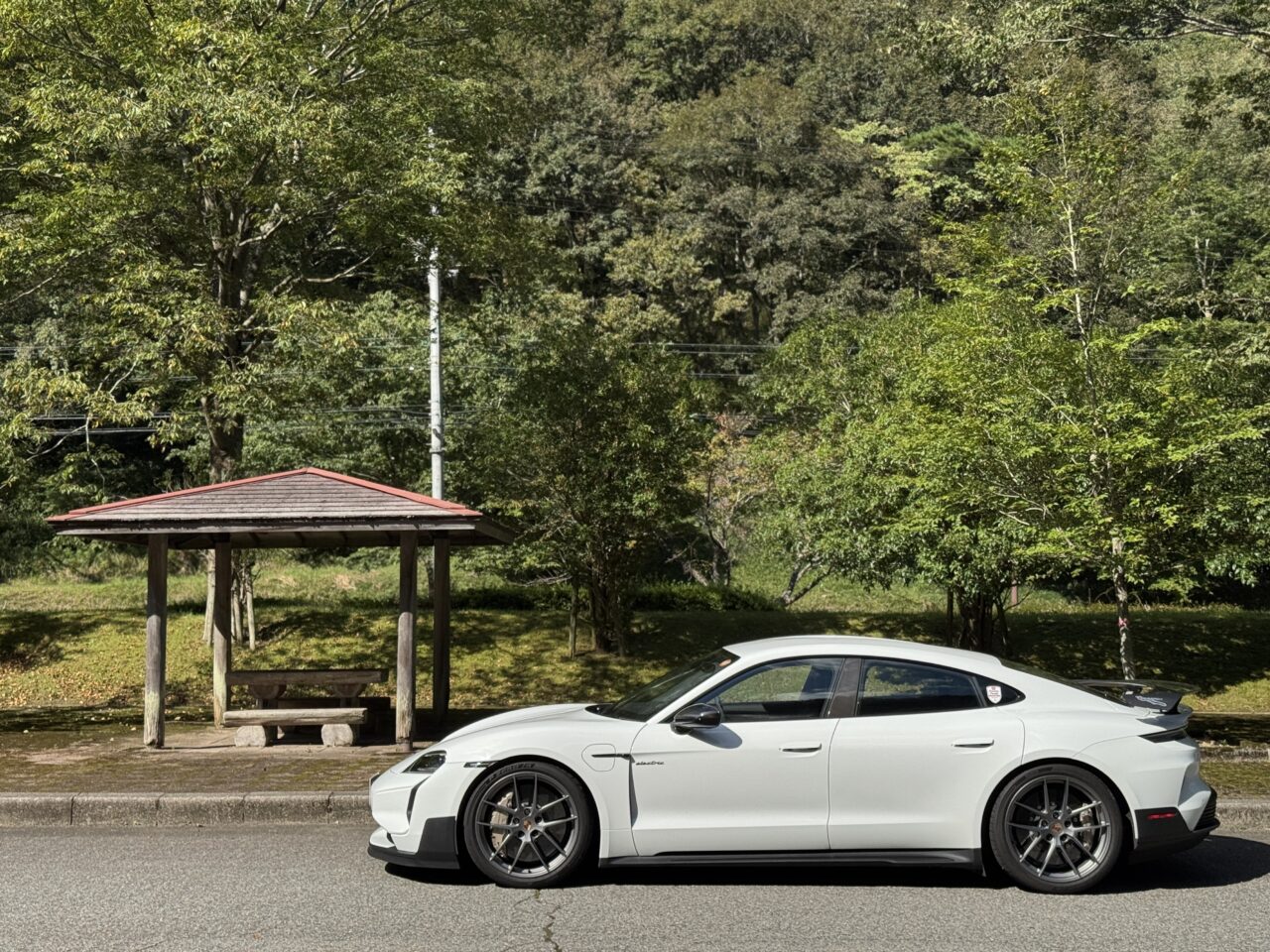
My wife’s impression was telling: “The Turbo GT is just too much. Its athleticism is so extreme that on days when I want to take it easy, it actually tires me out.” That’s true. The Turbo GT constantly demands a “combat mode.” Even on relaxed days, the car seems to urge you to push harder. The nameplate doesn’t even say “Taycan”—it simply reads “Turbo GT.” It’s best to think of it as a completely separate model. Though part of the Taycan family, it stands entirely on its own.
I used to think touring in a 2-meter-wide car wouldn’t be fun.
Having owned two Panameras, I never really felt like taking them on tours. They were wonderful cars but lacked a certain casual ease. The Taycan Turbo GT is different. On weekends, I find myself wondering where to drive next. That’s how much fun it is to drive. This feeling is the essence of the Turbo GT. It’s not just about speed or comfort. Driving itself becomes the goal. That’s the kind of car it is.
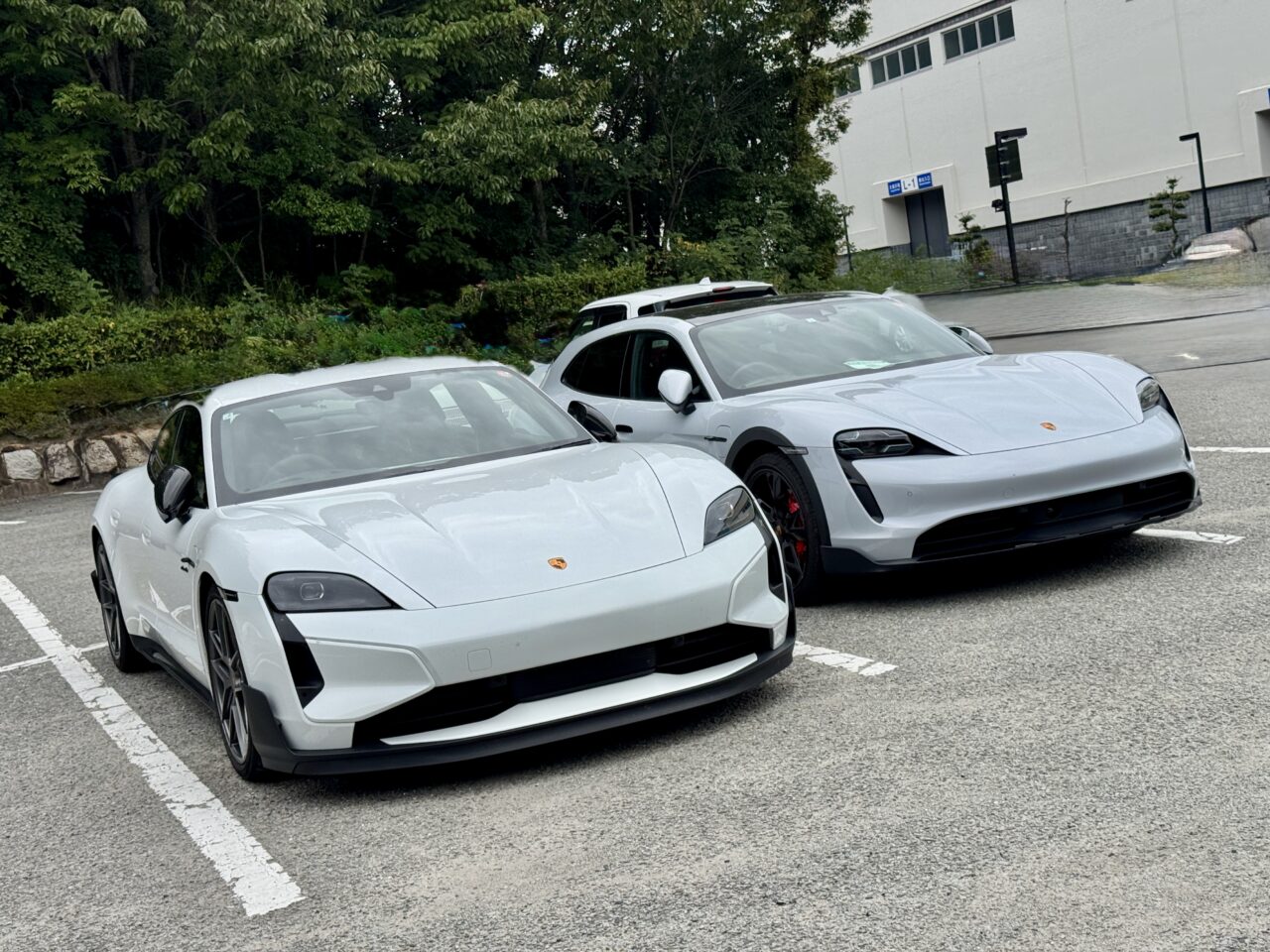
Turbo GT and my wife’s Cross Turismo 4S
Route Map for This Tour
このブログが気に入ったらフォローしてね!


Comment ( 0 )
Trackbacks are closed.
No comments yet.